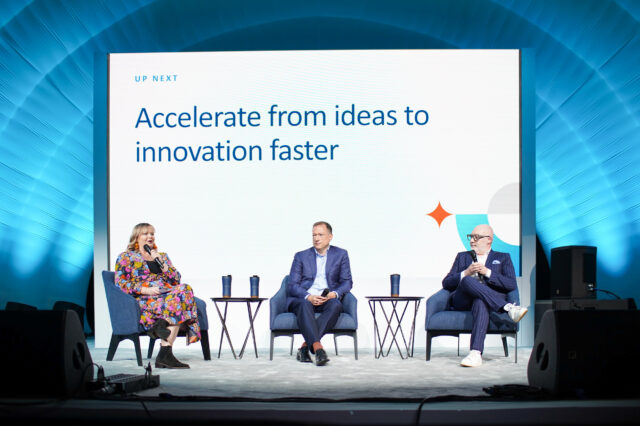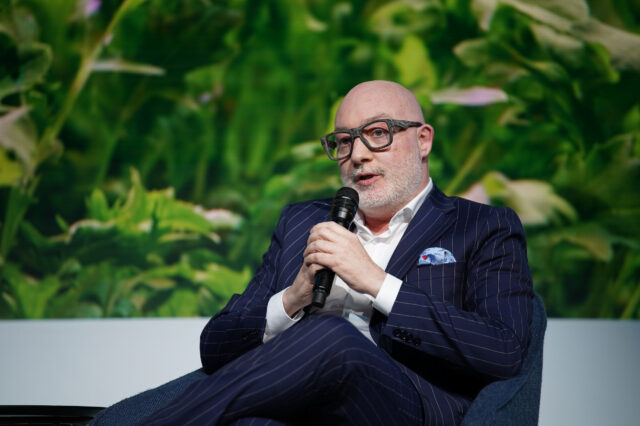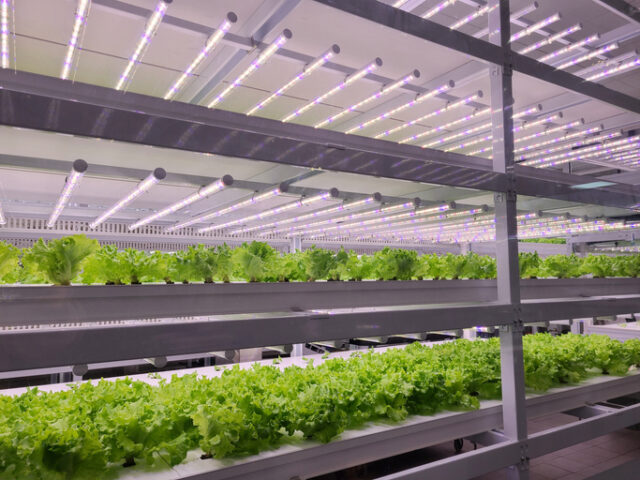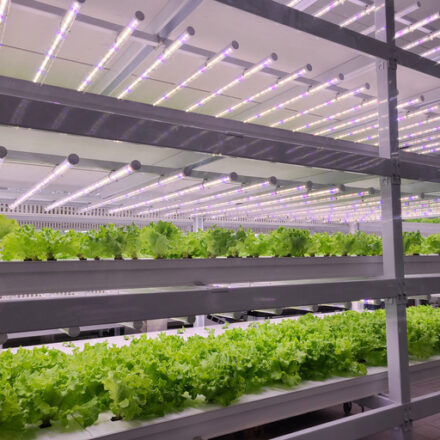At first glance, the concept of vertical farms—growing farms indoors in stacked layers and in a controlled environment—seems innovative. Why then do we see so few of them in the real world? The answer, argues Daniele Modesto, lies in the execution. After all, even the most innovative ideas flounder when you can’t implement them at scale.
To overcome the challenge, Modesto delivers an automated and modular vertical farming tech stack that enables farmers to grow anything, anywhere. This platform is the basis of Zero, a vertical-farming-as-a-service company Modesto co-founded in Italy.
In taking care of one of the technology bottlenecks for farmers, Zero has cracked a fundamental barrier to innovation: scale. Modesto sat for a thought exchange at Dell Technologies’ World with John Roese, Global CTO of Dell, on how to accelerate from idea to innovation.
What is innovation?

Vertical farming is the innovation at the heart of Zero. To scale the concept, Zero took care of implementation bottlenecks and developed an efficient modular technology stack that can stretch across industries and geographies.
As Zero’s example proves, innovation is not just about smart ideas—vertical farming—but the ability to turn them into tangible results. “For me, innovation is being able to take a promising idea and make it sustainable, not just for the environment but also for the financials,” Modesto says. Roese agrees. He further defines innovation as the act of doing something different to achieve a superior outcome, regardless of the domain.
Innovation is especially vital now as the global economy is being tested on multiple fronts: a looming recession, supply chain challenges and macroeconomic uncertainties. During such times, it might be easier to batten down the hatches and lie low on the innovation front. But that would be a grave mistake, Modesto says.
The Dell Innovation Index, a survey of 6,600 innovation influencers in organizations across 45+ countries, confirms Modesto’s thesis. Leaders who have built the ability to innovate at any time have developed resilience and transfer these gains to the companies they lead, the index shows. These leaders are 2.2 times more likely to accelerate innovation in uncertain economic times, which in turn yields rich dividends. The companies report increased revenue growth, are able to secure the right talent and create increased value for their customers.
How do enterprises nurture innovation?
If innovation is so vital, how do teams make room for it?

First, be pragmatic, Roese advises. Lay the foundation for innovation by identifying the baseline—where you’re spending money and what your key strengths are. This way, when a team member advances an innovative idea, enterprises can easily recognize the goalposts —where they are today and where the innovation will get them in the future. Another way to lay a strong foundation is to ensure employees have strong subject-matter expertise on which to base innovative growth.
Roese encourages companies to democratize innovation and include all workers regardless of location. Eighty-eight percent of the respondents in the Dell Innovation Index suggest remote workers have as many, if not more, opportunities to bring innovative ideas forward as compared to on-site staff. The most innovative ideas can also come from any team—sales, developers, customer experience—so companies need to build a culture that encourages questions and creativity from everyone, Roese says.
Give ideas room and time to grow so they might morph into profitable innovations, Roese offers. Innovation should be an iterative process and needs to be monitored closely so pivots can be made at the right time. The best teams develop a methodology to separate big breakthroughs from incremental innovation and understand they’re both important, Modesto says.
For innovation to happen, companies need to also strengthen their tech muscle. The Dell Innovation Index findings make this evident: while 61% of Information Technology Decision Makers (ITDMs) admit they could be providing more intelligent and responsive technology to improve the work experience, only 59% of them say they haven’t yet or don’t have the capacity to unlock innovation in their organization. When companies have seamlessly integrated the right technology infrastructure, they create a strong backbone for innovation. They can then keep an eye on the tech radar, Roese says, and identify core and adjacent technologies to move laterally into new avenues of strength and innovation.
Encourage the repurposing of tools and techniques. Innovation need not always be a bright and shiny new concept; it can be about finding ways in which old material can be recycled. Zero, for example, enables vertical farms to be housed in industrial buildings that are lying fallow. By doing so, enterprises “not only save money, they’re also doing something good for the environment because you’re using assets that are useless and giving them a new life,” Modesto says.
Enterprises need not tie themselves in knots worrying if they are doing innovation right, Roese says. The key is to just get started. “Find a creative way to do it within your constraints,” Modesto says. “Realize innovation will ultimately be the biggest tool you have to change your organization in a positive way.”
The entire session can be viewed below.


